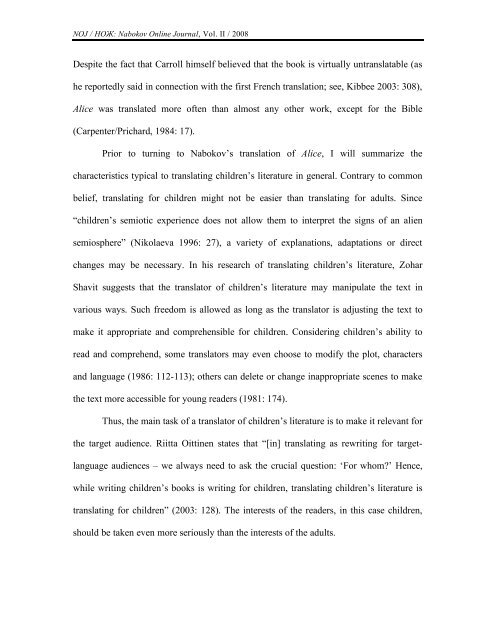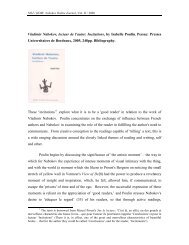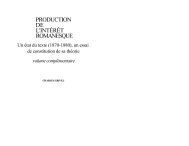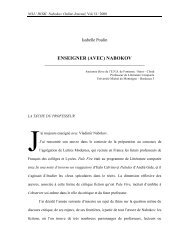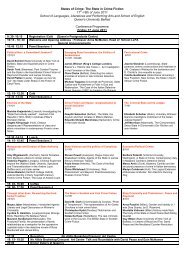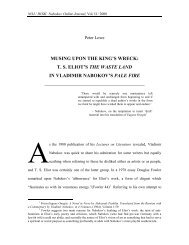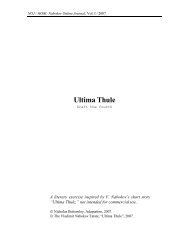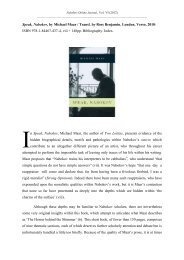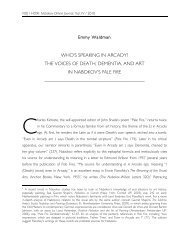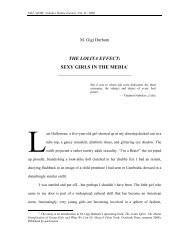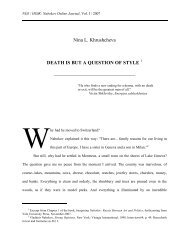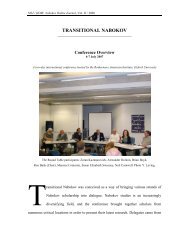domesticated translation: the case of nabokov's translation of alice's
domesticated translation: the case of nabokov's translation of alice's
domesticated translation: the case of nabokov's translation of alice's
You also want an ePaper? Increase the reach of your titles
YUMPU automatically turns print PDFs into web optimized ePapers that Google loves.
NOJ / НОЖ: Nabokov Online Journal, Vol. II / 2008<br />
Despite <strong>the</strong> fact that Carroll himself believed that <strong>the</strong> book is virtually untranslatable (as<br />
he reportedly said in connection with <strong>the</strong> first French <strong>translation</strong>; see, Kibbee 2003: 308),<br />
Alice was translated more <strong>of</strong>ten than almost any o<strong>the</strong>r work, except for <strong>the</strong> Bible<br />
(Carpenter/Prichard, 1984: 17).<br />
Prior to turning to Nabokov’s <strong>translation</strong> <strong>of</strong> Alice, I will summarize <strong>the</strong><br />
characteristics typical to translating children’s literature in general. Contrary to common<br />
belief, translating for children might not be easier than translating for adults. Since<br />
“children’s semiotic experience does not allow <strong>the</strong>m to interpret <strong>the</strong> signs <strong>of</strong> an alien<br />
semiosphere” (Nikolaeva 1996: 27), a variety <strong>of</strong> explanations, adaptations or direct<br />
changes may be necessary. In his research <strong>of</strong> translating children’s literature, Zohar<br />
Shavit suggests that <strong>the</strong> translator <strong>of</strong> children’s literature may manipulate <strong>the</strong> text in<br />
various ways. Such freedom is allowed as long as <strong>the</strong> translator is adjusting <strong>the</strong> text to<br />
make it appropriate and comprehensible for children. Considering children’s ability to<br />
read and comprehend, some translators may even choose to modify <strong>the</strong> plot, characters<br />
and language (1986: 112-113); o<strong>the</strong>rs can delete or change inappropriate scenes to make<br />
<strong>the</strong> text more accessible for young readers (1981: 174).<br />
Thus, <strong>the</strong> main task <strong>of</strong> a translator <strong>of</strong> children’s literature is to make it relevant for<br />
<strong>the</strong> target audience. Riitta Oittinen states that “[in] translating as rewriting for target-<br />
language audiences – we always need to ask <strong>the</strong> crucial question: ‘For whom?’ Hence,<br />
while writing children’s books is writing for children, translating children’s literature is<br />
translating for children” (2003: 128). The interests <strong>of</strong> <strong>the</strong> readers, in this <strong>case</strong> children,<br />
should be taken even more seriously than <strong>the</strong> interests <strong>of</strong> <strong>the</strong> adults.


